For the frequent traveler, the excitement of exploration often combines with the challenge of a wellness routine. Battling against cramped airplane seating and ever-shifting surroundings, sustaining self-care practices can be a significant challenge. But what if you could give your health a little boost right within those movements?
The innovative approach of red light therapy (RLT) offers a handy solution for the health-focused traveler. Whether it's countering the fatigue of transit or recovering from a day spent exploring, RLT serves as an effective remedy. Through compact red light devices that occupy little space in bags, this effective treatment can become part of everyday life.
Can red light therapy be useful for frequent travelers? Yes! Portable red light makes traveling way easier because it enables one to solve the physical and mental problems caused by traveling and at the same time not lose a grip on wellness.

The Downsides of Disrupted Routines
The Negative Effects of Travel
Traveling, particularly across time zones, can be profoundly draining for our bodies.
Jet Lag: Most people experience jetlag as one such effect of time zone difference. This may leave you fatigued, confused, and incapable of focusing. Those afflicted with jet lag frequently struggle with insomnia, endure headaches, and suffer irritability, diminishing the enjoyment of their travels.
Sleep Disruption: Disrupted sleep patterns are another major concern among tourists. When you travel across different zones and sleep in strange places, the circadian rhythm gets interrupted. Thus, a person may find it difficult to sleep, which is essential in order to enjoy every day of the trip.
Stress and Inflammation: The stress associated with travel, from meticulous planning to enduring long flights or altering one’s diet, can heighten bodily discomfort and inflammation.
Combating Travel Woes with Red Light Therapy
How Red Light Therapy Supports Jet Lag Relief?
Circadian Rhythm Regulation
One of the primary benefits of red light therapy is its ability to modulate the biological clock. Red light regulates melatonin production, which can reset the body's internal clock. This proves especially beneficial for regular travelers amid numerous flights, as red light therapy fosters relaxation and aids the body in adapting to new time zones.
Improved Sleep Quality
A remarkable benefit of red light therapy lies in its ability to enhance sleep quality, a feature particularly pertinent for travelers and business professionals adapting to new locales. RLT encourages relaxation by balancing the circadian rhythm, making it easy to fall asleep and stay asleep, regardless of the travel disturbances. The addition of only a few brief red light therapy sessions before bed can foster an unwinding pre-sleep routine, helping you relax and inform the body that it is time to go to sleep. Thus, you get up refreshed and enthusiastic about the day’s activities!
Reduced Inflammation
Travel typically imposes physical stress, leading many individuals to experience inflammation that contributes to discomfort and fatigue. The application of red light therapy is famous for being an anti-inflammatory treatment. When Inflammation is minimized, you are likely to feel less soreness and discomfort during the journey.
Energy Boost
Red light therapy promotes increased energy by providing an added stimulus to the mitochondria that synthesizes the cellular energy currency, adenosine triphosphate (ATP). The red light reaches the skin and induces better oxygenation and delivery of nutrients, culminating in increased production of ATP. A quick session of red light therapy can leave travelers feeling invigorated and refreshed, countering the sluggishness from prolonged flights and busy itineraries. Thanks to this energy boost, you can now fully pursue all your adventures without wasting a single second!

Integrating Red Light Therapy into Your Travel Routine
Travel Must-Haves: Red Light Therapy Included
Integrating red light therapy into your travel schedule is more practical than you think. Here are ways to accomplish this:
Packing Your Portable Device: As you pack, ensure that your red light therapy device goes in alongside your essentials. Find one that is lightweight and easy to use so you can fit it into any travel routine easily.
Hotel Room Usage: When you reach the intended location, red light therapy will not be a challenge for you to practice in the hotel room. Schedule sessions around your downtime, ideally before sleep or right after waking up. This will ensure that your body adapts to the new surroundings.
On-the-Go Applications: Depending on the specifications and practicality of your device, you might even be able to use it during long flights or car rides. Many air travelers bring along red light therapy devices, using them in a chair to ease any discomfort or pain. Just make sure to check the size and weight first to ensure it is travel-friendly.
Choosing the Right Portable Red Light Device
When it comes to portable red light therapy devices for travel, there are several other considerations that one has to keep in mind. Although there will not be particularly focused product recommendations, below are smart rules for better decisions:
- Size and Weight: It’s better to settle for a small and light device that will ensure that there will be no space concerns in the bags.
- Wavelength: Different devices produce different wavelengths of light. It is important to understand the best wavelengths for your use, whether for skin health or energy boosting.
- Ease of Use: Consider the device's operational simplicity, such as timer functions and adjustable intensity. A simple design would be ideal since it would be easy to use while traveling.
There are many choices in the market but Bestqool Redot series is one portable red light device which travelers will find useful. Nonetheless, it's essential to compare various products to choose one that aligns closely with your health goals.
Conclusion: Embrace Wellness on the Go
Utilizing portable red light therapy while traveling can offer numerous benefits, including combating jet lag, improving sleep, alleviating discomfort, and maintaining overall wellness on the go. For travelers, prioritizing health is crucial, and with red light therapy, concerns about well-being during and after your journey can be significantly reduced. As you prepare for your upcoming travel journey, we would recommend looking into the effectiveness of red light therapy and how it can impact your travel.
Travel should not be viewed as a burden when health is taken care of in the right way. So, carry your portable red light devices and get ready to have fun on your next trip!
References
- Glass G. E. (2021). Photobiomodulation: The Clinical Applications of Low-Level Light Therapy. Aesthetic surgery journal, 41(6), 723–738. https://doi.org/10.1093/asj/sjab025
- DE Oliveira, M. F., Johnson, D. S., Demchak, T., Tomazoni, S. S., & Leal-Junior, E. C. (2022). Low-intensity LASER and LED (photobiomodulation therapy) for pain control of the most common musculoskeletal conditions. European journal of physical and rehabilitation medicine, 58(2), 282–289. https://doi.org/10.23736/S1973-9087.21.07236-1




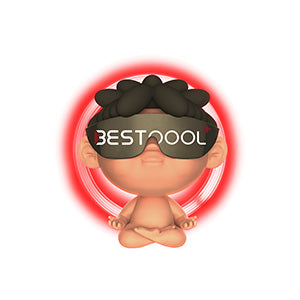








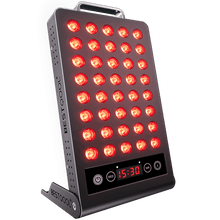
 Small
Small
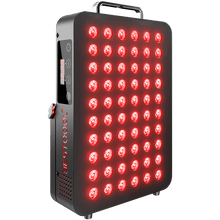
 Moderate
Moderate
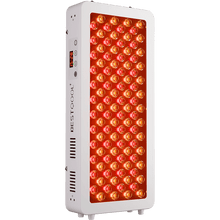
 Moderate
Moderate
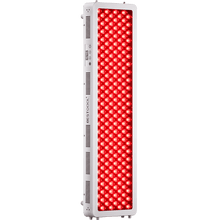
 Moderate
Moderate
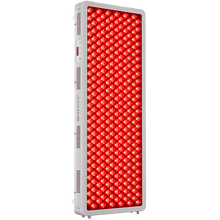
 Full
Full



